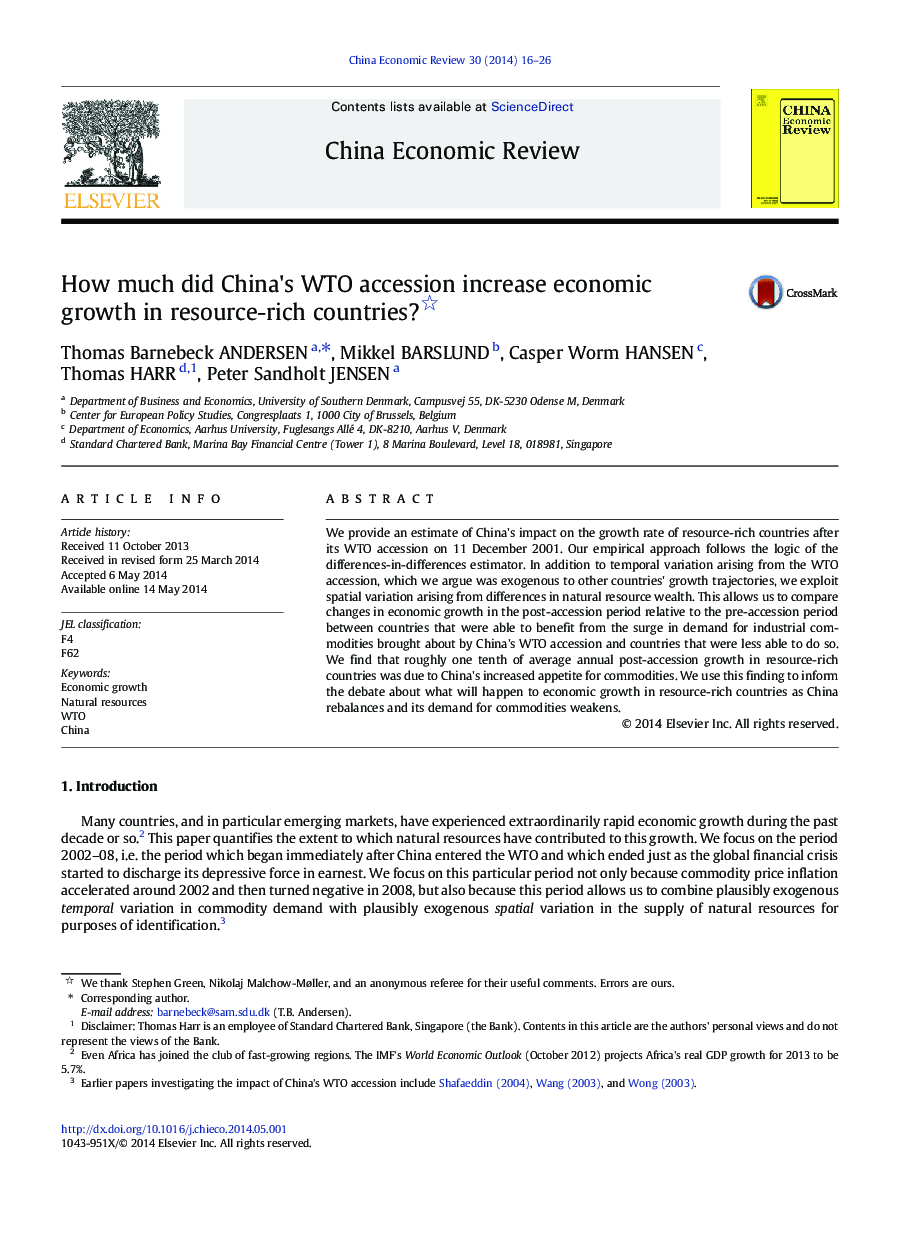| Article ID | Journal | Published Year | Pages | File Type |
|---|---|---|---|---|
| 5047344 | China Economic Review | 2014 | 11 Pages |
â¢We provide an estimate of China's impact on the growth rate of resource-rich nations.â¢Our empirical approach follows the logic of the differences-in-differences estimator.â¢China's commodity demand explains one tenth of growth in resource-rich nations.â¢We use this finding to gauge the consequences of a Chinese growth slowdown.
We provide an estimate of China's impact on the growth rate of resource-rich countries after its WTO accession on 11 December 2001. Our empirical approach follows the logic of the differences-in-differences estimator. In addition to temporal variation arising from the WTO accession, which we argue was exogenous to other countries' growth trajectories, we exploit spatial variation arising from differences in natural resource wealth. This allows us to compare changes in economic growth in the post-accession period relative to the pre-accession period between countries that were able to benefit from the surge in demand for industrial commodities brought about by China's WTO accession and countries that were less able to do so. We find that roughly one tenth of average annual post-accession growth in resource-rich countries was due to China's increased appetite for commodities. We use this finding to inform the debate about what will happen to economic growth in resource-rich countries as China rebalances and its demand for commodities weakens.
